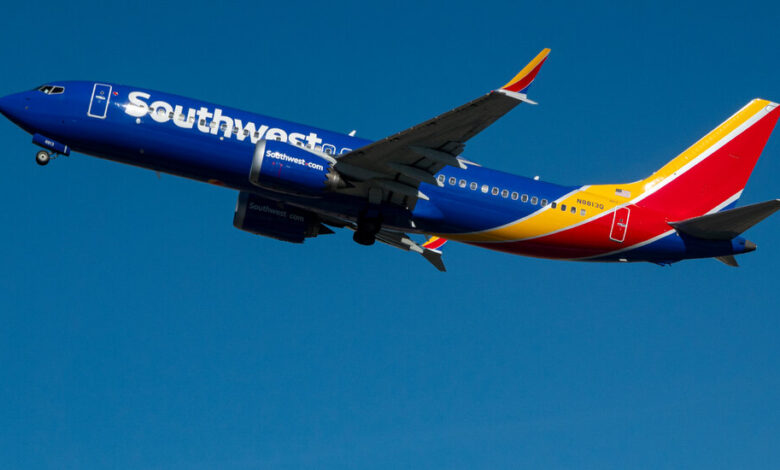U.S. Investigating ‘Dutch Roll’ That Damaged a Boeing 737 During Flight

A rare midair sway-and-wobble that caused “substantial” damage to the tail section of a Southwest Airlines plane during a flight last month has become the focus of an investigation by the Federal Aviation Administration and the National Transportation Safety Board, the agencies said this week.
The plane, a Boeing 737 Max 8, was flying at an altitude of 34,000 feet from Phoenix to Oakland, Calif., around 8 a.m. Pacific time on May 25 when the flight crew members said they experienced what is known as a Dutch roll, the N.T.S.B. said in a statement on Friday.
A Dutch roll is “a coupled oscillation” that creates simultaneous side-to-side and rocking motions, producing a figure-8 effect. The phenomenon is believed to have been named by an aeronautical engineer who compared it to a traditional ice skating technique made popular in the Netherlands.
If unaddressed, the wobbling can become more exaggerated, creating a dangerous feedback loop.
“It’s a weird movement of the airplane, an oscillation that, if not dampened or stopped, could continue to get worse and worse,” said Jeff Guzzetti, a former accident investigator for the F.A.A. and N.T.S.B. “It’s a vicious cycle.”
Dutch rolls do happen from time to time, under the right circumstances. Most modern airplanes, including the Max, have equipment to dampen its effects, according to Mr. Guzzetti.
“There’s still a lot we don’t know about this,” he said. “Usually modern jets need computers to dampen out these potential ‘Dutch roll’ tendencies. It may just be an indication of the wrong circumstances at the wrong time with the wrong components out of commission.”
None of the 175 passengers onboard or crew members were injured, the safety board said.
After landing and a subsequent inspection, Southwest “discovered damage to structural components,” the safety board said. The F.A.A. described the damage as “substantial” in its preliminary report, which was published on Thursday. The airline notified the N.T.S.B. of the Dutch roll and the damage on June 7, the safety board said.
The F.A.A.’s preliminary report said that the plane experienced a Dutch roll and regained control. A post-flight inspection revealed damage to the standby power control unit, which is a backup system to control the plane’s rudder, it said.
The N.T.S.B. received data downloaded from the digital flight recorder that will help “investigators in determining the length and severity of the event,” the safety board said in the statement. The cockpit voice recorder “was overwritten and unavailable to investigators.”
A preliminary report from the N.T.S.B. is expected within the next few weeks.
“The F.A.A. is working closely with the N.T.S.B. and Boeing to investigate this event,” the F.A.A. said in a statement. “We will take appropriate action based on the findings.”
Boeing referred inquiries about the episode to Southwest, which said in a brief statement that it was “participating in and supporting the investigation.”
Federal regulators are looking at several other incidents involving Boeing aircraft. The company developed a plan to make sweeping safety improvements after a door panel blew out of a 737 Max 9 jet in mid-flight in January. The F.A.A. limited Boeing’s monthly production of 737 Max jets and audited its production lines; it is also investigating the company’s compliance with federal safety standards.
Boeing faces potential legal repercussions from two 737 Max 8 crashes that killed hundreds in 2018 and 2019.
On Thursday, the F.A.A. administrator, Mike Whitaker, told a Senate committee that the agency was “too hands-off” in overseeing Boeing and that it should have had better knowledge of the manufacturer’s safety practices before the door panel incident.



